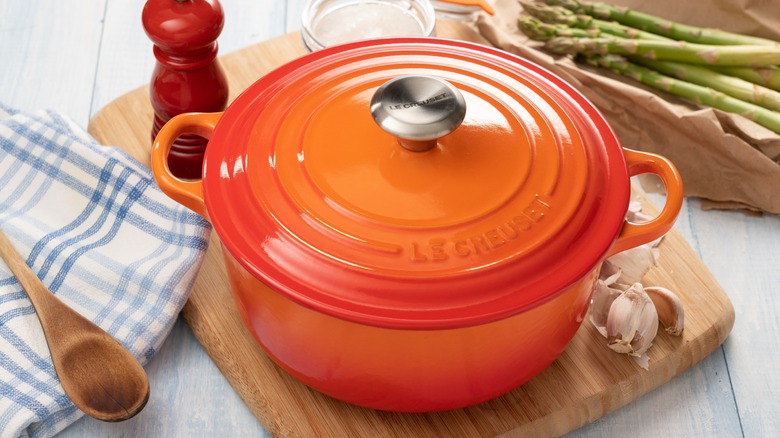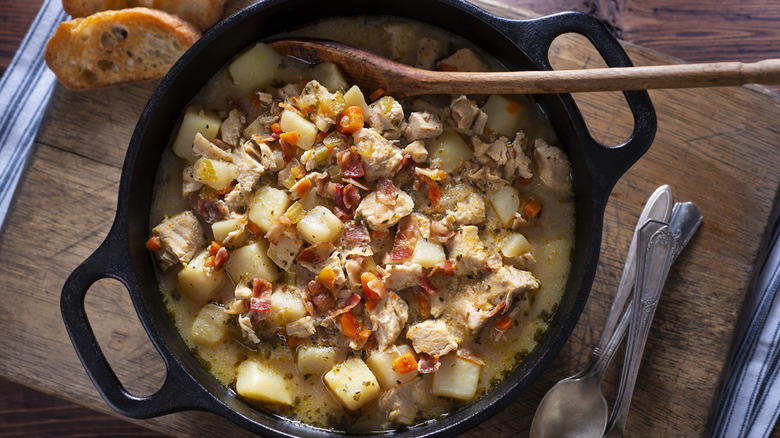French Vs Dutch Ovens: What's The Big Difference?
A Dutch oven is one of the most versatile pots you can have in your kitchen, and it can be used on the stovetop or in the oven. From baking or braising, there really isn't anything these workhorses can't do. If you've gone shopping for a Dutch oven before or looked up some recipes that use them, you might have come across the term French oven and been thrown for a loop. Is there really a difference between a French and a Dutch oven? Well, kind of.
Technically speaking, a Dutch oven is a cast iron pot that supposedly gets its name from cast iron pots made by Abraham Darby in the 18th century using a Dutch casting method. Another theory is that they came from Dutch traders or were brought to Pennsylvania by Dutch settlers. While their historical origins are muddled, Dutch ovens traditionally have been cast iron. French ovens, on the other hand, are an improvement on the Dutch oven design and feature an enameled coating that set them apart.
However, the terms are all but interchangeable today, as many Dutch ovens, such as those made by Le Creuset, are actually French ovens due to their enameled interiors. Likewise, cocottes, smaller enameled Dutch ovens, are sometimes called French ovens. If this seems confusing, try to remember Dutch ovens lack an enameled coating (traditionally), French ovens have an enameled coating, and a cocotte is a smaller French oven.
Cast iron or enamel: which is better?
Although most people call French ovens Dutch, the question still stands whether a traditional cast iron Dutch oven is better or worse than the enameled variant. Well, enameled French ovens are easier to maintain and use, as they don't have to be seasoned and are protected from rust. Meanwhile, cast iron needs to be seasoned before you can even cook with it, and it has very particular care requirements to maintain it. For instance, when cleaning cast iron, you shouldn't submerge it in water to prevent rusting. That said, cast iron is made to last a lifetime with the proper care, whereas enameled French ovens can be prone to scratches and cracks due to misuse, especially if they're not high-end.
Another difference to consider is that, while Dutch and French ovens are both capable of searing, seasoned cast iron will provide a better sear, as an enameled coating can hinder browning. Moreover, enameled French ovens are usually only rated for temperatures up to 500 degrees Fahrenheit. While this makes it good for most baking and cooking, in contrast, cast iron can be used at any temperature.
So, which one's actually better? Well, it depends on you and what you're cooking. If you don't mind the maintenance and care that comes with cast iron, you really can't go wrong with a traditional Dutch oven. However, if you want something ready to go out of the box and easier to maintain, then a French oven will be more your style.

